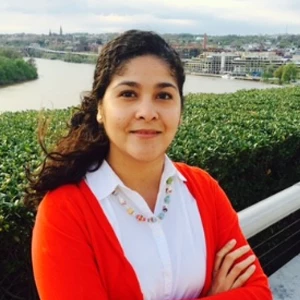This blog is the second of a series of blogs showcasing the different features of the Poverty and Inequality Platform (PIP).
Continuing with our video-blog series, in this week’s video we review PIP’s Country Profiles. This tool is a one-stop shop for users interested in exploring one particular economy at the time, for a more in-depth analysis. Simply by selecting the country and desired poverty line at the top of the page, users will see a comprehensive summary of the main development indicators and their trends.
The first piece is the Key indicators section, which quickly informs users of the country’s most recent statistics on poverty, shared prosperity, population, and economic growth. On the right-hand side users will find the most recent Poverty and Inequality Brief (PEB) for the particular country chosen – a two-page executive summary on each country’s poverty and inequality trends.
Scrolling down users will encounter three sections of graphs. The first one is on poverty, where, aside from poverty trends (on the left), users will have a visual understanding of how their country of interest performs among its regional peers (right). The next two graphs are on inequality, with quick visuals on trends in the Gini and Theil indices, as well as a comparison of characteristics of individuals at the bottom 40% of the income distribution vs. those at the top 60%. Finally, the bottom two graphs provide additional insights into the country’s development, showcasing multidimensional poverty and shared prosperity. All these analyses can be quickly shared on social media, and the data behind them can be easily downloaded in a csv file.
We hope this second video tutorial was useful for your PIP experience. We will continue to explore the different functionalities of PIP in the following weeks. Stay tuned for a review of the Poverty Calculator next!
We gratefully acknowledge financial support from the UK government through the Data and Evidence for Tackling Extreme Poverty (DEEP) Research Programme. This work has also been supported by the World Bank’s Partnership Fund for Sustainable Development Goals (SDG Fund) and a World Bank trust fund with the Republic of Korea, acting through the Korea Development Institute School of Public Policy and Management (KDIS), for the KDI School Partnership for Knowledge Creation and Sharing.




Join the Conversation